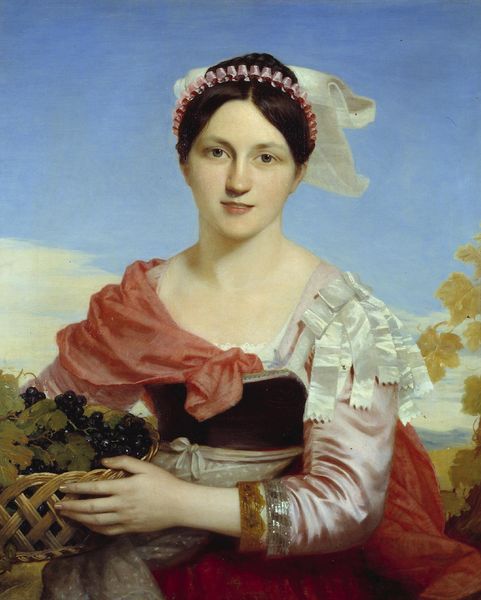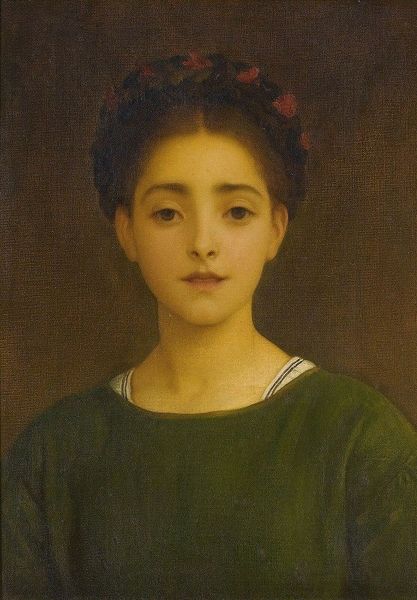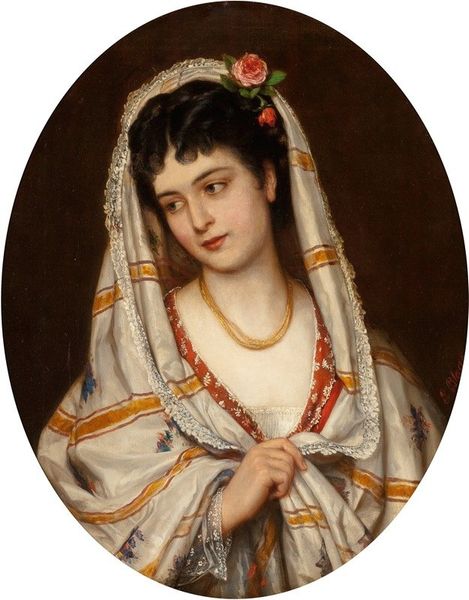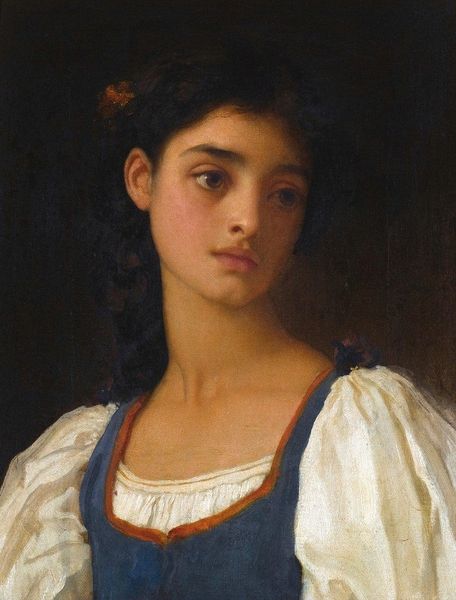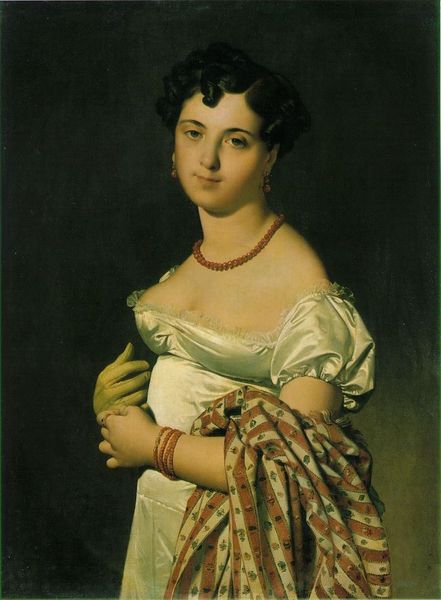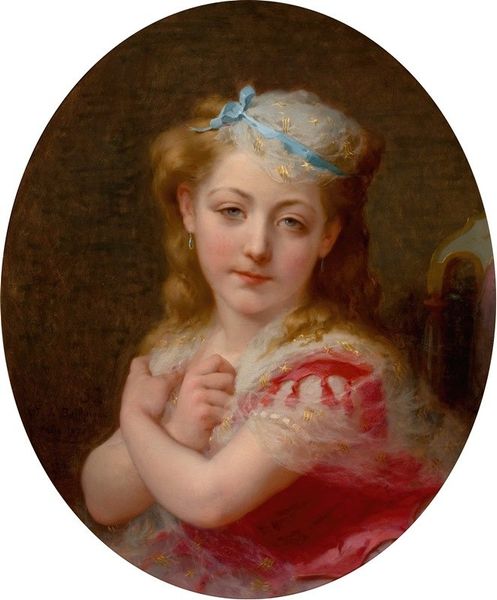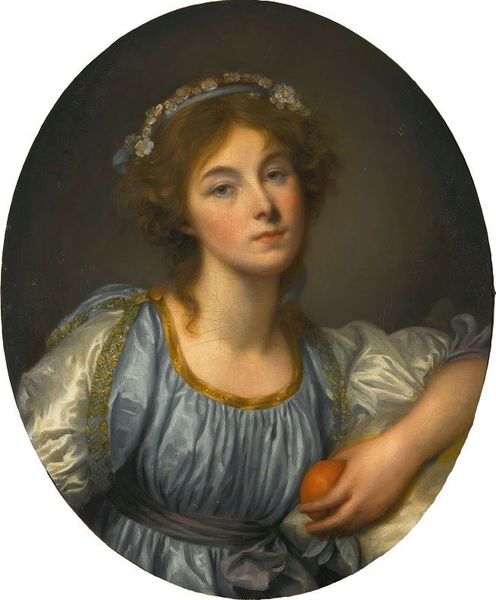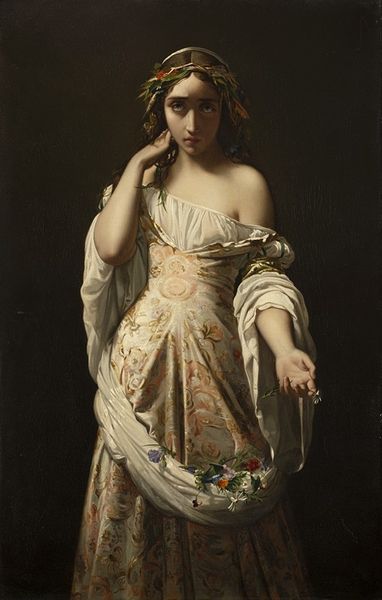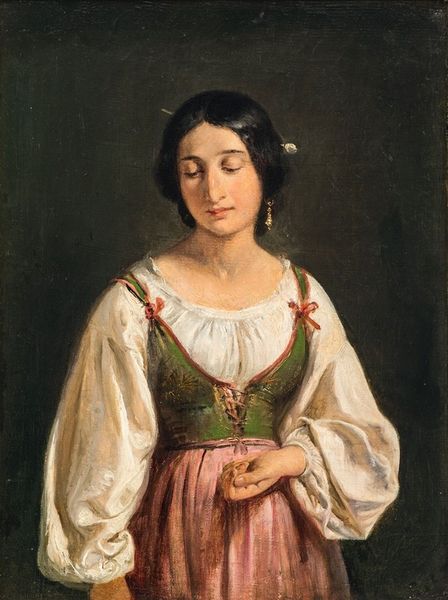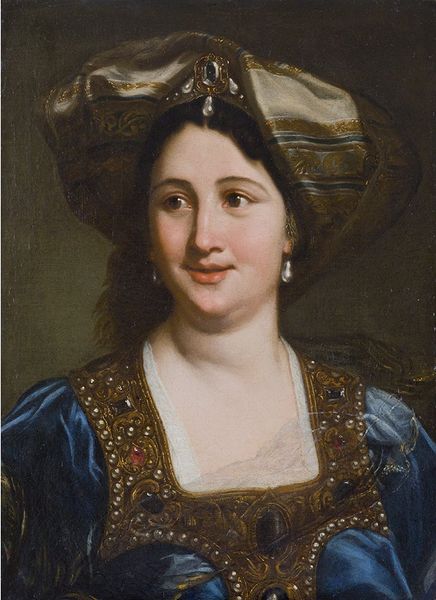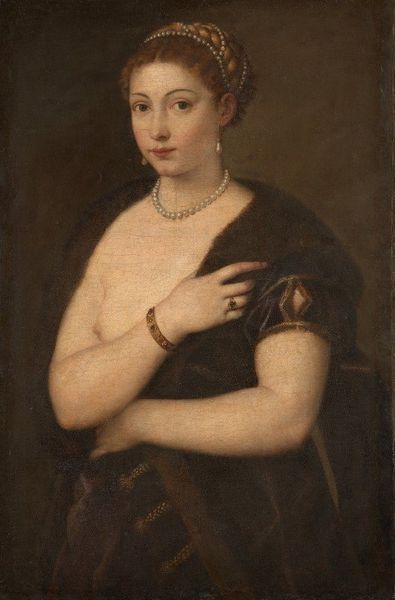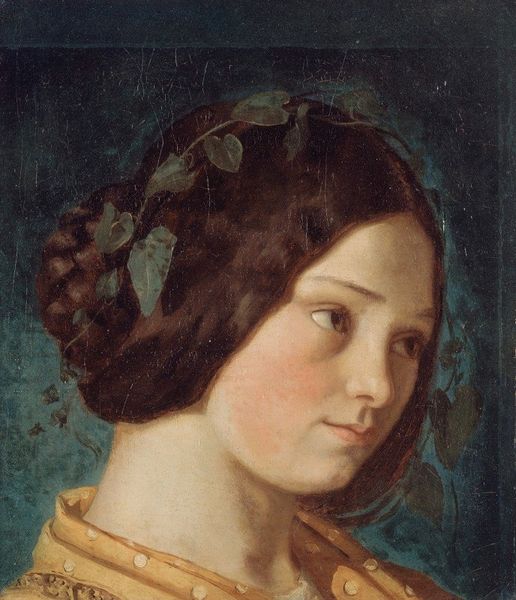
painting, oil-paint
#
portrait
#
gouache
#
figurative
#
painting
#
oil-paint
#
oil painting
#
romanticism
#
watercolour illustration
#
academic-art
#
portrait art
#
watercolor
Copyright: Public Domain: Artvee
Editor: So here we have Henri Lehmann's "Faustine Léo," created in 1842 using oil paints. It has this serene, almost dreamlike quality about it. How do you read the subtleties in this piece? Curator: Subtleties indeed, and thank you for that keen observation! It whispers to me of spring, of that fleeting moment of youth caught between bud and full bloom. Lehmann positions Faustine within a constructed natural idyll. Do you sense that the 'natural' setting feels, well, a bit staged? Editor: I can see that! The greenery almost feels like it’s carefully arranged, not wild. It's very curated and almost idyllic. What’s the story behind the wreath, then? Is that symbolic in some way? Curator: Ah, the wreath. A common motif in Romanticism, don’t you think? A celebration of innocence, perhaps, or a connection to the classical ideal of youthful beauty and virtue. Think of Flora, goddess of flowers. What if Faustine *is* Flora for a day? Editor: That adds a whole new layer to it! Seeing her not just as a portrait but as a sort of mythological figure in disguise is really interesting. Curator: Disguise might be too strong a word. But consider the power of *suggestion*. Art often thrives in that in-between space, wouldn't you agree? I suppose I was more ready to imagine and associate because she gazes outward, gently beckoning us to also become players in that romantic game. What did you expect, and did she draw you in? Editor: Absolutely. The setting, coupled with what you said makes this more evocative and profound than just an image. Curator: Right? When it comes to seeing beyond an image, all we must sometimes do is to step outside our expectations!
Comments
No comments
Be the first to comment and join the conversation on the ultimate creative platform.
